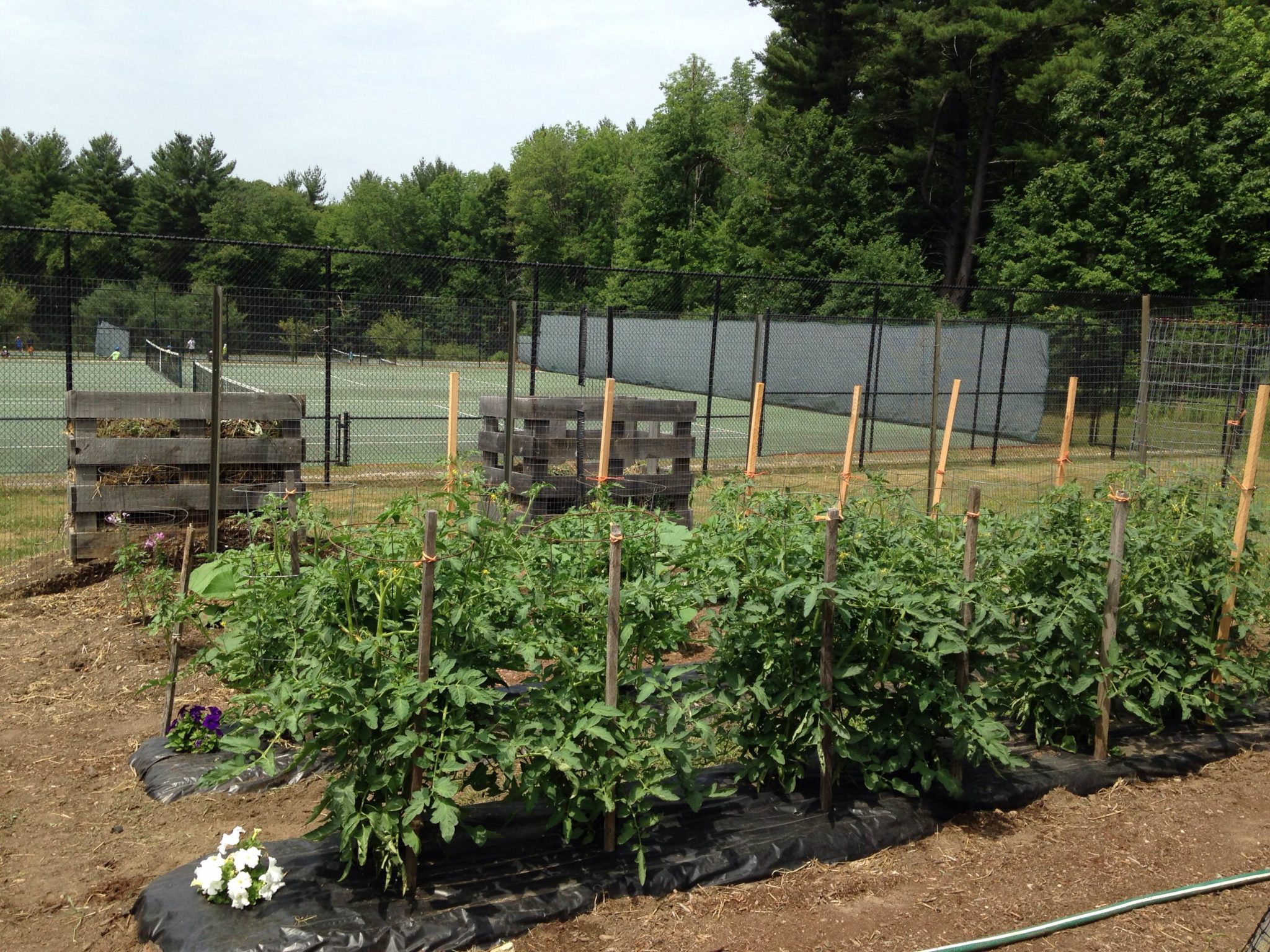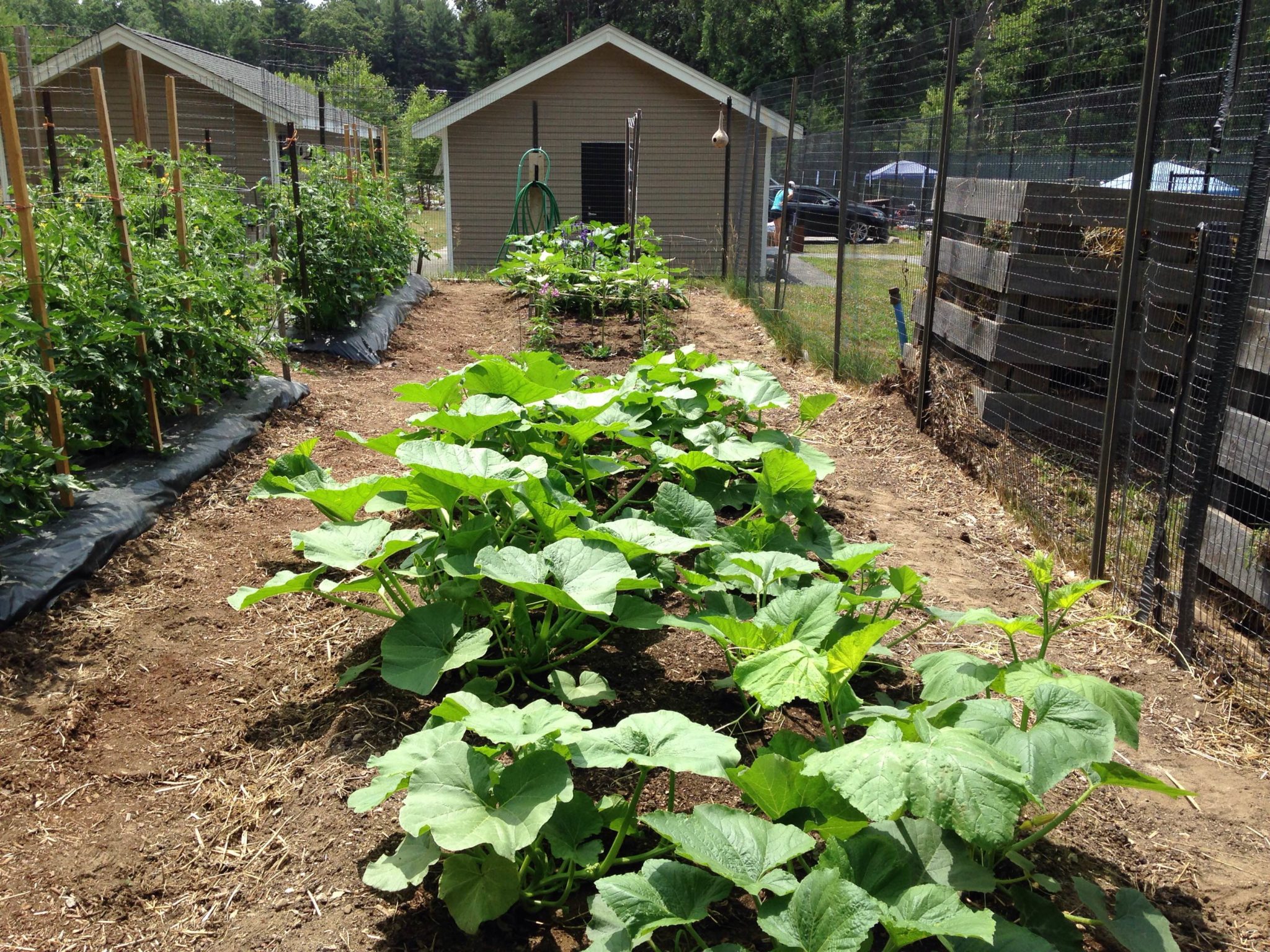Behind the schoolhouse and up a curved path is a plot of land where the echoes of Landry House construction are muffled by an enclosure of trees. Here sunlight filters regularly through the Estabrook Woods, the former home of renowned naturalist Henry David Thoreau who once famously asked, “What use is a house if you haven’t got a tolerable planet to put it on?”
This is the sentiment that echoes silently as faculty volunteers tend the Middlesex garden. Each summer these volunteers, led by Carrie Bolster, have traded their chalk for trowels and committed themselves to doing what Middlesex faculty do best: growing seeds (and students) with patience, diligence, and joy. The annual garden is once again thriving—the air is fragrant with fresh thyme, rosemary, oregano, and tarragon—and the bounty of tomatoes, cucumbers, eggplants, kale, and green peppers (among others) will grace dining hall dishes this fall.
Our own local food source is part of the School’s commitment to sustainability and our ongoing effort to make a more “tolerable planet for our home.” The campus has reduced its carbon footprint by 20% since converting its centralized heating plant from oil to natural gas, and we have made it a priority to design our new buildings with sustainability in mind. The now obsolete boiler room, for instance, will be converted into an 150-seat performance hall for our new Music and Campus Center, and the entire building will be heated and cooled by the geothermal wells that were installed last summer. We can hardly wait for the opening of our state-of-the-art, environmentally sustainable buildings. But as our garden has taught us, the best results come from careful planning and mindful patience.

